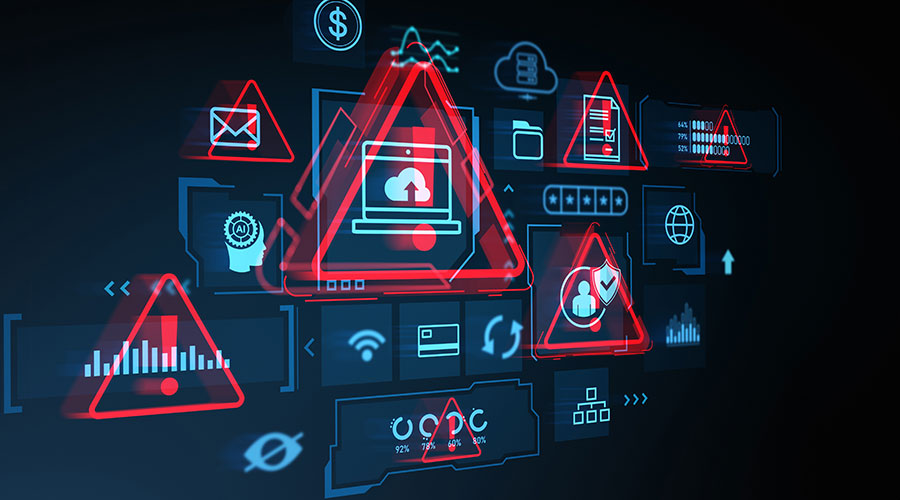As technology advances, contact centers need to keep evolving, especially in terms of being more customer-centric. In every sector, customers seek a more personalized experience, and most contact centers struggle to keep up with rising expectations for service. This is perhaps most evident in the healthcare sector, where the stakes are higher on both sides of the coin than with everyday consumer products.
In this market, the “customer” is usually a patient – or a caregiver or family member - dealing with a health issue, so agents cannot afford to be misinformed. On the provider side, healthcare facilities are highly complex and costly to run, and contact centers have an increasingly important role to play in improving operations by virtue of providing not only great but proactive service.
There are many ways to do that, with the most common being inbound communications where agents respond to inquiries as they come into the contact center. While this is where most resources are focused, there is another mode of engagement that healthcare providers are seeing as having increasing value. Inbound inquiries remain the norm, but are reactive, relying on the patient to initiate the communication. This only addresses one segment of the broader cycle of patient care.
For a variety of reasons, the healthcare sector is moving to a more holistic, patient-centric model where prevention and active management are just as important as providing treatment. One way to support this model is the use of proactive outbound notifications. Rather than respond to any manner of inquiries ranging from urgent to mundane, these notifications are purposeful, with specific outcomes in mind.
Being notifications, they provide a different form of service; rather than solving problems in a reactive manner, they communicate information that’s both timely and relevant to the recipient. Since they are provided on an opt-in basis, the notifications are expected, and when acted upon, will help prevent problems or make the patient’s situation more manageable. This is what makes these notifications a proactive form of customer service. Based on the healthcare provider’s existing knowledge of a patient’s condition, outbound notifications can be a very effective form of service, and ultimately patient care.
This approach to customer service is well aligned with today’s healthcare realities, as it helps patients self-manage their health, along with streamlining the process of providing care. In this regard, both sides of the healthcare equation benefit. Patients and caregivers are kept on schedule for appointments, taking medication, alerted to the need to refill a prescription or come in for follow up tests or consultations, as well as being updated on other important information or events. While this is just one slice of the customer service pie, every notification has a specific purpose, and they all help improve patient care, which should in time translate into higher levels of patient (customer) satisfaction.
For healthcare providers, there are two types of benefits. First is the use of proactive engagement to help patients get the best outcomes possible. Aside from keeping patients healthier, this helps optimize the use of resources that support the healthcare system. When patients adhere to their proscribed care regime, less time is wasted with missed appointments, fewer consultations are needed, and there is less need for patients to visit hospitals.
The second form of benefit comes from making the contact center more strategic. These notifications are largely automated, so they don’t add to the workload of your agents or require adding more agents. Outbound notifications can also be used to connect the patient to preventative care nurses. With “right party connect” campaigns an outbound notification call creates an automated dialog with the contact, verifies that the “right party”, the patient has been reached and then connects them to staff in the contact center who can speak with them about their care. In this case the nurse as an inbound contact center agent need only handle the call when the right party has been reached. When these notifications lead to better patient outcomes, the cost of providing care falls, and a case can be made that this type of customer service improves the overall ROI for the contact center.
To further illustrate, here are some common examples of how healthcare providers can use proactive outbound notifications:
• Sending appointment reminders so patients don’t forget and the provider doesn’t have lost bookings that others in need could be using
• Reminders for patients to take medications so they can stay healthy or get better, which helps reduce the need for going to a healthcare facility later on
• Notices for prescription refills or pickups to keep patients on program and streamline pharmacy operations
• Updates on insurance claims so patients are kept current on their status, and by extension to help maintain continuity in treatment – otherwise, if lapses occur due to financial constraints, their health may deteriorate, triggering more critical and costly forms of care
• Announcements for events or activities that promote overall health, such as seasonal flu shots, blood donor clinics, programs for nutrition, exercise, wellness, etc.
• Reaching out to the patient and connecting them to a nurse or other health care specialist when the notification system verifies the right party, the patient, is available to speak with the nurse.
While the benefits of proactive outbound notifications are clear, most healthcare contact centers lack the capabilities to deliver them effectively. Legacy-based systems have limited integration with patient databases to access the right data in a timely manner, and IT often lacks the expertise and/or resources to manage this. Furthermore, legacy systems can support multichannel communication to some degree, but not enough to meet the preferences of today’s consumer.
Omnichannel represents the next generation of contact center solutions, and proactive outbound notifications serve as just one example where this path brings new capabilities along with business value. The sheer volume of patients and associated notifications that could improve healthcare as well as keep agents in the contact center the most productive is best managed from the cloud, as it provides the scalability, flexibility needed often in the most cost effective way .
The flexibility of the cloud lets the healthcare contact center support all the modes used by patients to communicate, namely email, text/messaging and voice (including automated notifications). For many consumers, being able to use their preferred mode is central to the customer service experience, and their decision to opt-in for these notifications will largely be based on this capability.
Jacki Tessmer is Vice President of Cloud & Service Provider Strategy for Enghouse Interactive.

 Healthcare Facilities Look to Future-Proof Facilities
Healthcare Facilities Look to Future-Proof Facilities Yale New Haven Health Experiences Data Breach
Yale New Haven Health Experiences Data Breach Rethinking Facilities: A New-Generation Approach to Behavioral Healthcare
Rethinking Facilities: A New-Generation Approach to Behavioral Healthcare ThedaCare to Open Medical Center in Fond du Lac, Wisconsin
ThedaCare to Open Medical Center in Fond du Lac, Wisconsin UF Health Hospitals Rely on Green Globes to Realize Their Full Potential
UF Health Hospitals Rely on Green Globes to Realize Their Full Potential